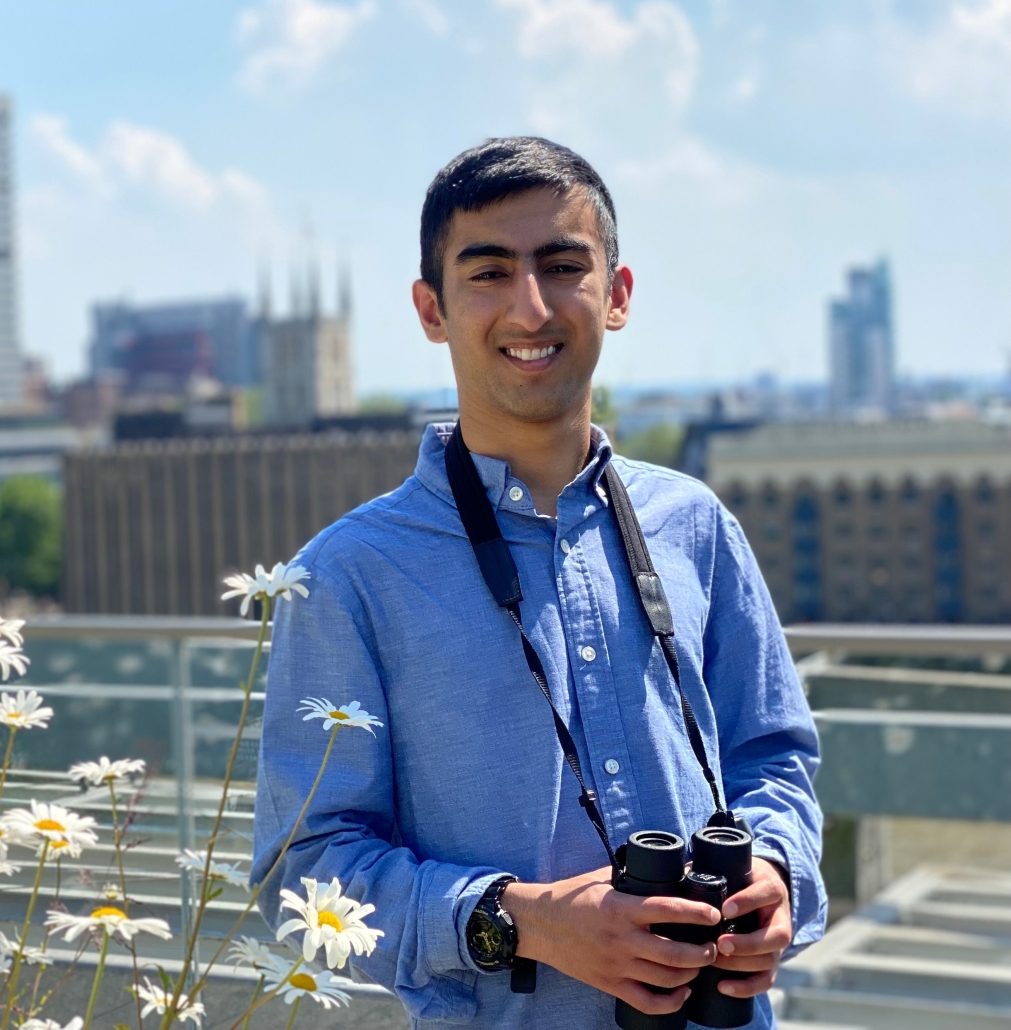Kabir Kaul is an inspiring young conservationist. Through writing, broadcasting, public speaking and social media, he raises awareness about the capital’s green spaces and their wildlife, which he calls the ‘Wild Side of London’ – and believes every Londoner has a responsibility to protect it.
In the following interview, Kabir tells us about how he first discovered Colne Valley Regional Park, his favorite wildlife spots, and his concerns for the future of the park.
How did you first come across the Colne Valley Regional Park?
I’ve loved nature all my life in some way. Inspired by the sight of many wood pigeons, house sparrows and robins living in my garden when I was seven, I started exploring local wildlife sites. I live in Eastcote, so the Park is a short drive away. Often my family and I would go for lunch at the Old Orchard in Harefield, which at the time had a stunning view of the Mid-Colne Valley and its reservoirs. After lunch I would often go birding along the nearby Canal, and also often visited Stocker’s Lake in Rickmansworth. During the winter, I loved watching migratory wildfowl such as wigeon, teal, shoveler and pochard in the lakes across the Park. It’s astounding to think how far they travel from the Arctic each year just to get to Rickmansworth and Harefield!
What is your best wildlife spot in Colne Valley Regional Park?
Fray’s Farm Meadows in Ickenham is magical throughout the year. I first visited in 2016, and admittedly it was initially very hard to find! It’s a very scenic nature reserve bordered by the Canal, the A40 and the adjacent reserve, Denham Lock Wood. Raptors are very frequent visitors, with soaring buzzards and red kites and the occasional kestrel hovering metres above my head. It’s the best place in my local area to see hobbys, which hunt for dragonflies along the Fray’s River in spring and summer. If you’re lucky, you might bear witness to the spectacular mayfly spawning, when hundreds of these insects emerge from the river and take to the skies for one day in June. But beware of the grazing horses – they can be temperamental at times.
Do you have any concerns for the future of the Colne Valley Regional Park?
The future of the Park is highly threatened, so I’m very concerned. Several major infrastructure projects are currently being undertaken or have been approved, most notably High Speed Two (HS2). Between 2019-2020 I surveyed Broadwater Lake for the Wetland Bird Survey, counting hundreds of migratory ducks during the winter. Comparing the two winters during which I surveyed the site, there was a noticeable decline in the number of ducks, which I believe was partly due to the beginning of HS2 works near the site. I’m not sure how the wildfowl population is faring today. In addition, many sprawling fields in Harefield and Ickenham have been turned into HS2 construction sites, not to mention the ancient woodland that is still under threat.
HS2 is just one of many projects given the green light in the Valley: there is of course the planned Heathrow Expansion, and last week we learned about a new service station that will be built in Iver. Not only will these erase ancient habitats and green belt from the map, but will fragment what is left of the Park. If the Regional Park as a whole were granted a statutory designation, perhaps this threat of development could be diminished. But when existing Sites of Special Scientific Interest (SSSI) designations in areas like Broadwater Lake are already being disregarded, I fear the example that is being set for development in London and the South East. Decision-makers and developers must view the Colne Valley as one large, interconnected, biodiverse Regional Park.
How do you think Colne Valley Regional Park can engage more with younger people in the local area?
The Park is already doing some fantastic work to engage young people in learning about and valuing the Colne Valley, such as the Groundwork Green Teams and activities at the Iver Environmental Centre. These opportunities could be advertised more often on social media, especially Instagram, which a lot of young people use; I’m new to it myself! More wildlife walks could be run for young people as well, perhaps starting from an urban area such as Ruislip or Uxbridge, which are easily accessible by public transport.
Young people don’t have to be experts in identification. During any activity, they can simply enjoy being surrounded by wildlife and learn about some of the Regional Park’s habitats and species, while having an opportunity to make new friends with a similar interest in nature. Also, a youth forum or advisory group could be set up, to increase youth representation and input in the Park’s decision-making.
To find out more about Kabir and his passion for the environment, check his website here.




